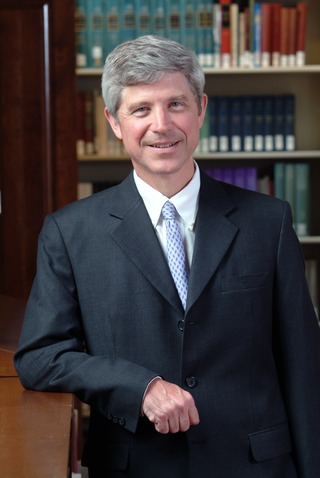
The Fu Foundation School of Engineering and Applied Science is the engineering and applied science school of Columbia University. It was founded as the School of Mines in 1863 and then the School of Mines, Engineering and Chemistry before becoming the School of Engineering and Applied Science. On October 1, 1997, the school was renamed in honor of Chinese businessman Z.Y. Fu, who had donated $26 million to the school.

Samuel Wright Bodman III was an American businessman, engineer, and politician who served as the 11th United States Secretary of Energy during the George W. Bush administration, from 2005 to 2009. He was also, at different times, the Deputy Secretary of the Treasury and the Deputy Secretary of Commerce.

Raghunath Anant Mashelkar,, also known as Ramesh Mashelkar, is an Indian Chemical Engineer, born in a village named Marcel in Goa and brought up in Maharashtra. He is a former Director General of the Council of Scientific and Industrial Research (CSIR). He was also the President of Indian National Science Academy (2004-2006), President of Institution of Chemical Engineers (2007) as also the President of Global Research Alliance (2007-2018). He was also first Chairperson of Academy of Scientific and Innovative Research (AcSIR). He is a Fellow of the Royal Society, Fellow of the Royal Academy of Engineering (FREng), Foreign associate of US National Academy of Engineering and the US National Academy of Sciences.
Robert A. Brown is a chemical engineer and university administrator. He was the 10th president of Boston University and a former provost of Massachusetts Institute of Technology (MIT). In 1991, Brown was elected as a member into the National Academy of Engineering for the application of computing techniques to fundamental and practical problems in fluid mechanics, rheology, and crystal growth.
Elmer Keiser Bolton was an American chemist and research director for DuPont, notable for his role in developing neoprene and directing the research that led to the discovery of nylon.
George Edward Holbrook was a noted American chemical engineer and a founding member of the National Academy of Engineering.
In 1957, the research organization of the Chemicals Department of E. I. du Pont de Nemours and Company was renamed Central Research Department, beginning the history of the premier scientific organization within DuPont and one of the foremost industrial laboratories devoted to basic science. Located primarily at the DuPont Experimental Station and Chestnut Run, in Wilmington, Delaware, it has expanded to include laboratories in Geneva, Switzerland, Seoul, South Korea, Shanghai, China, and India(Hyderabad). In January, 2016 a major layoff marked the end of the organization.

Uma Chowdhry is an American chemist whose career has been spent in research and management positions with E. I. du Pont de Nemours and Company. She has specialized in the science of ceramic materials, including catalysts, proton conductors, superconductors and ceramic packaging for microelectronics.
Charles Milton Altland Stine was a chemist and a vice-president of DuPont who created the laboratory from which nylon and other significant inventions were made. He was also a devout Christian who authored a book about religion and science.

Thomas M. Connelly Jr., born in Toledo, Ohio in June 1952, is an American business executive with a focus on chemical engineering. In February 2015, he succeeded Madeleine Jacobs as chief executive officer and executive director of the American Chemical Society.
Thomas H. Chilton was a chemical engineer and professor. He is considered a founder of modern chemical engineering practice and lectured widely around the world. He received numerous awards, including an honorary doctorate and the President's Certificate of Merit. In 1994, DuPont named a laboratory in Wilmington, Delaware for him.
Edward G. Jefferson was a British-born American chemical engineer, chemist, businessman, CEO and Chairman of DuPont corporation. During Jefferson's leadership as Chairman, DuPont suffered from numerous controversies; such as polluting public waterways.
Benjamin S. Hsiao is an American materials scientist and educator. He served as the vice-president for research and chief research officer at Stony Brook University from May 2012 to December 2013.

The Charles Goodyear Medal is the highest honor conferred by the American Chemical Society, Rubber Division. Established in 1941, the award is named after Charles Goodyear, the discoverer of vulcanization, and consists of a gold medal, a framed certificate and prize money. The medal honors individuals for "outstanding invention, innovation, or development which has resulted in a significant change or contribution to the nature of the rubber industry". Awardees give a lecture at an ACS Rubber Division meeting, and publish a review of their work in the society's scientific journal Rubber Chemistry and Technology.
Babatunde Ayodeji Ogunnaike was an American chemical engineer of Nigerian descent and the William L. Friend Professor of Chemical and Biomolecular Engineering at the University of Delaware (UD). He was the former dean of UD's college of engineering. He died on February 20, 2022. He had waged a long battle with cancer.

Herbert S. Eleuterio was an American industrial chemist noted for technical contributions to catalysis, polymerization, industrial research management, and science education. In particular, he discovered the olefin metathesis reaction and several novel fluoropolymers. Additionally, he explored techniques for research leadership, especially methods for fostering collaboration, globalization, and scientific creativity.

Juan J. de Pablo is a chemical engineer, Liew Family professor in the Pritzker School of Molecular Engineering at the University of Chicago and senior scientist at Argonne National Laboratory. In 2018, he was appointed Vice President for National Laboratories at the University of Chicago, a title which later expanded to include Science Strategy, Innovation and Global Initiatives in 2020. As of 2021, he is Executive Vice President for Science, Innovation, National Laboratories and Global Initiatives at the University of Chicago. He is known for his research on the thermophysical properties of soft materials. He is currently the co-director of the NIST supported Center for Hierarchical Materials Design (CHIMaD). and former director of the UW-Madison Materials Research Science and Engineering Center (MRSEC). He was elected a member of the National Academy of Sciences in 2022.
Laxmangudi Krishnamurthy Doraiswamy (1927–2012) was an Indian-American chemical engineer, author and academic, known for his contributions in developing Organic synthesis engineering as a modern science discipline. Chemical Engineering journal of McGraw Hill listed him among the 10 most distinguished chemical engineers in the world in 1988. He was the author of nine texts in chemical engineering, including Organic Synthesis Engineering, a 2001 publication which is known to have introduced the topic as a definitive scientific stream and Heterogeneous reactions: Analysis, Examples, and Reactor Design, reportedly the first comprehensive text in chemical engineering.
Hong Yong Sohn is an American engineer, currently a Distinguished Professor in Metallurgical Engineering at the University of Utah.







